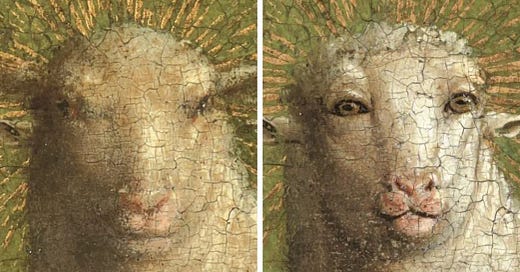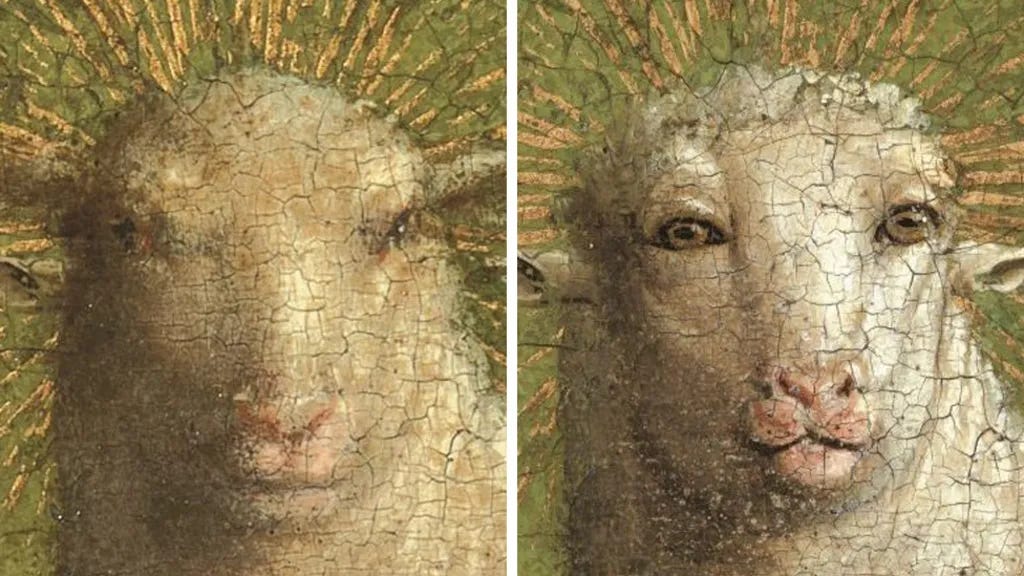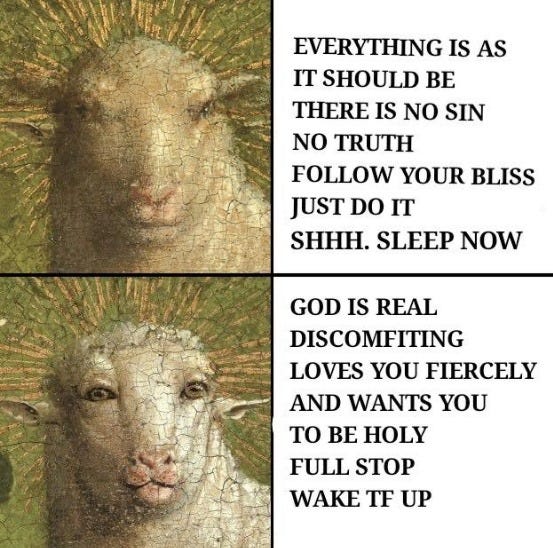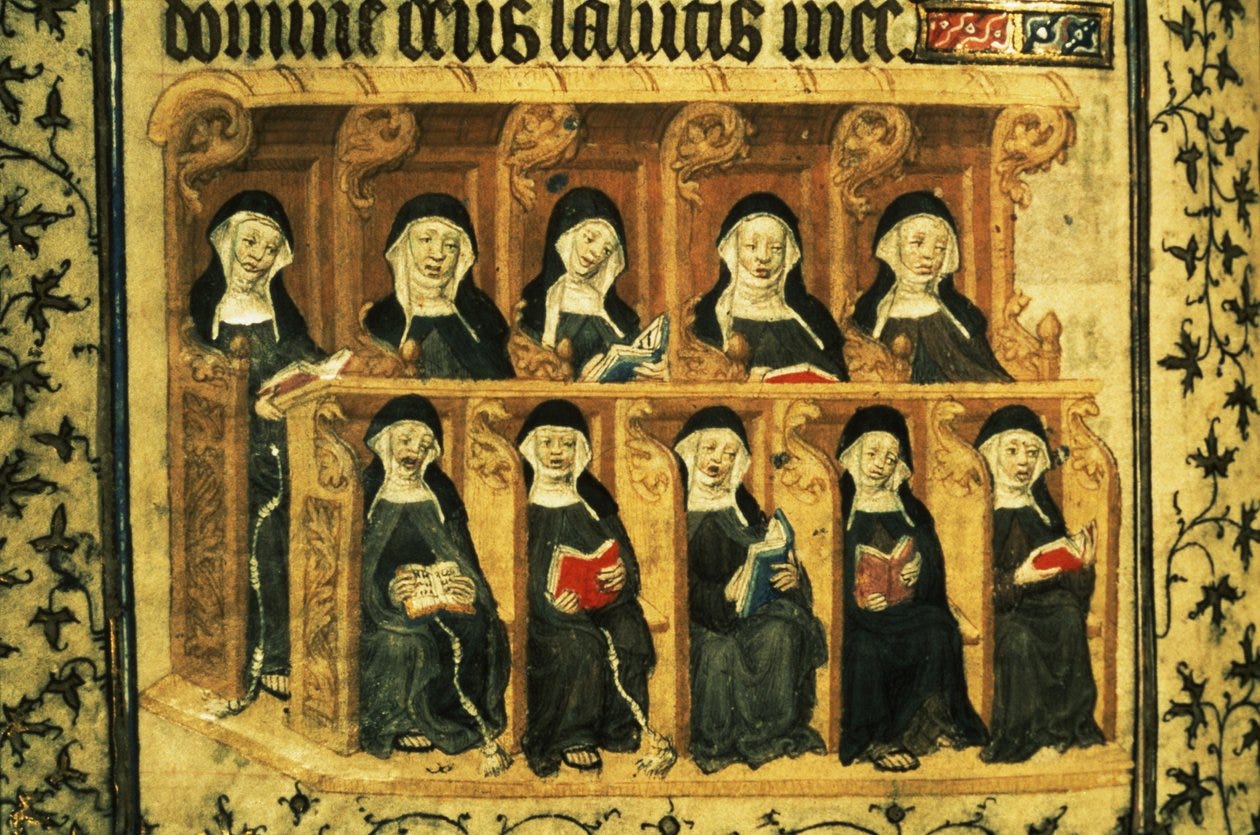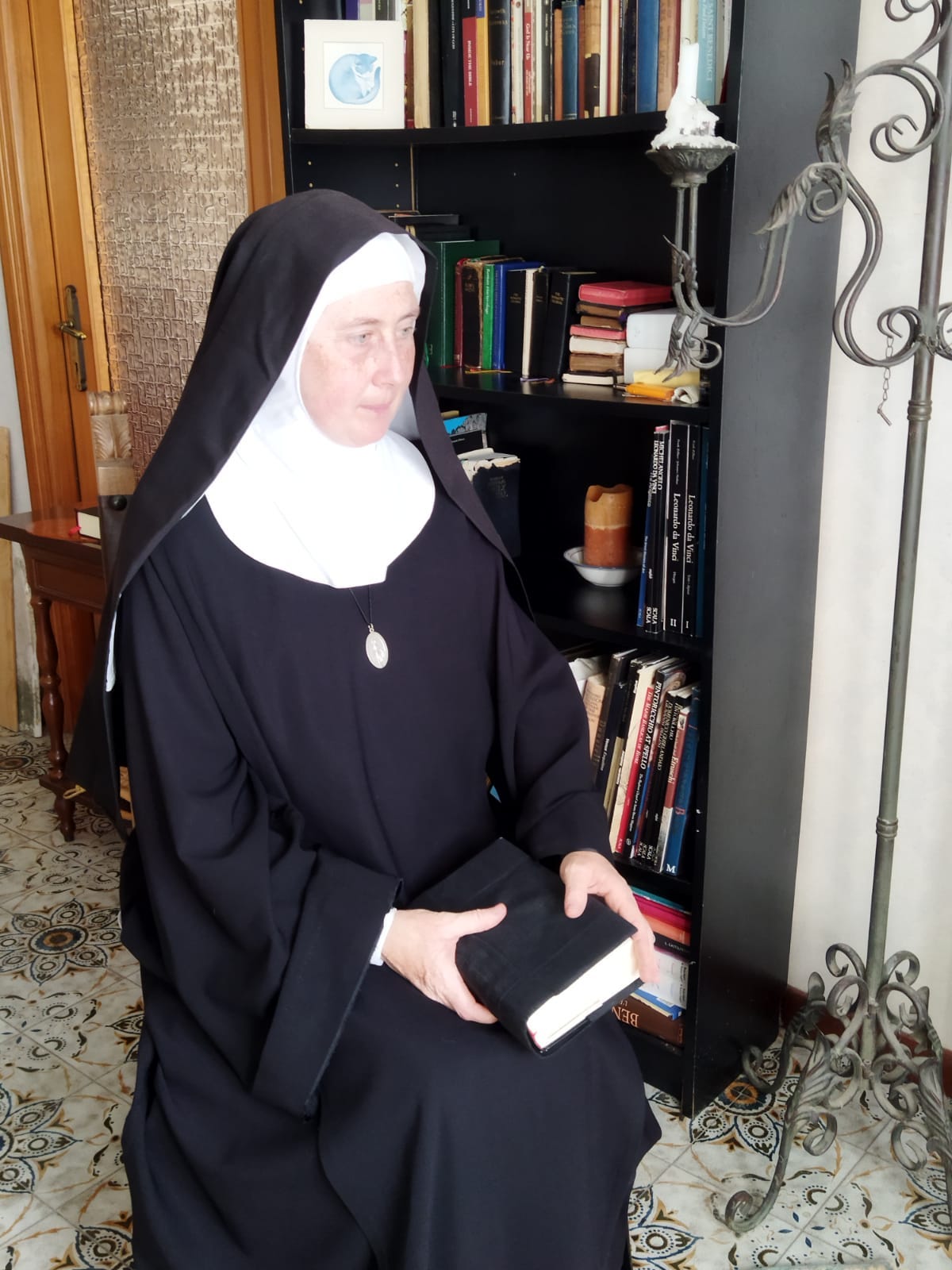The Friday post: "Awake, O sleeper!" Real religion is scary
Below the fold: Why the icons aren't smiling; unsettling by design
Awake, O sleeper,
and arise from the dead,
and Christ will shine on you.

A few years ago, the people restoring it published a photo of the restored Lamb of God in the Ghent Altarpiece1. And the Modernians were (faux) freaking out about it and calling it “weird” and “creepy” and generally having a good old pearl-clutching fit. An article in the Smithsonian magazine, quoted by the BBC, called it “alarmingly humanoid”. One had to wonder where the people at the Smithsonian had got their degrees.
I assumed that the purpose of this - no, it wasn’t because Jan Van Eyck didn’t know what a sheep looked like - would be perfectly obvious, even to the non-religious. The name of the painting, after all, is The Adoration of the Mystic Lamb, not “A pretty sheep in a rustic setting.”
The outburst of faux fright on the internet prompted a few entertaining memes:
The 16th century overpainting had naturalised the Lamb’s face, turning it into merely an animal, a naturalistic rendering of an ordinary sheep. The original was a religious iconographic construction depicting a mystical reality - the adoration of the Lamb of God by the heavenly hosts, the flowing out of the Water of Life from the heavenly altar. The figure depicted is not a sheep, but the Lamb of God, the Logos, God-made-man, who taketh away the sins of the world. The eyes of the Lamb face forward and are anthropomorphised for that reason. God is looking Right. At. You.

Yes, real religion isn’t nice, sleepy, comforting, bland or dull. It’s not a duvet2. Real religion, on the increasingly rare occasions you meet it in our times, will make you jump right out of your socks. How do you think it created an entire globe-spanning civilisation?

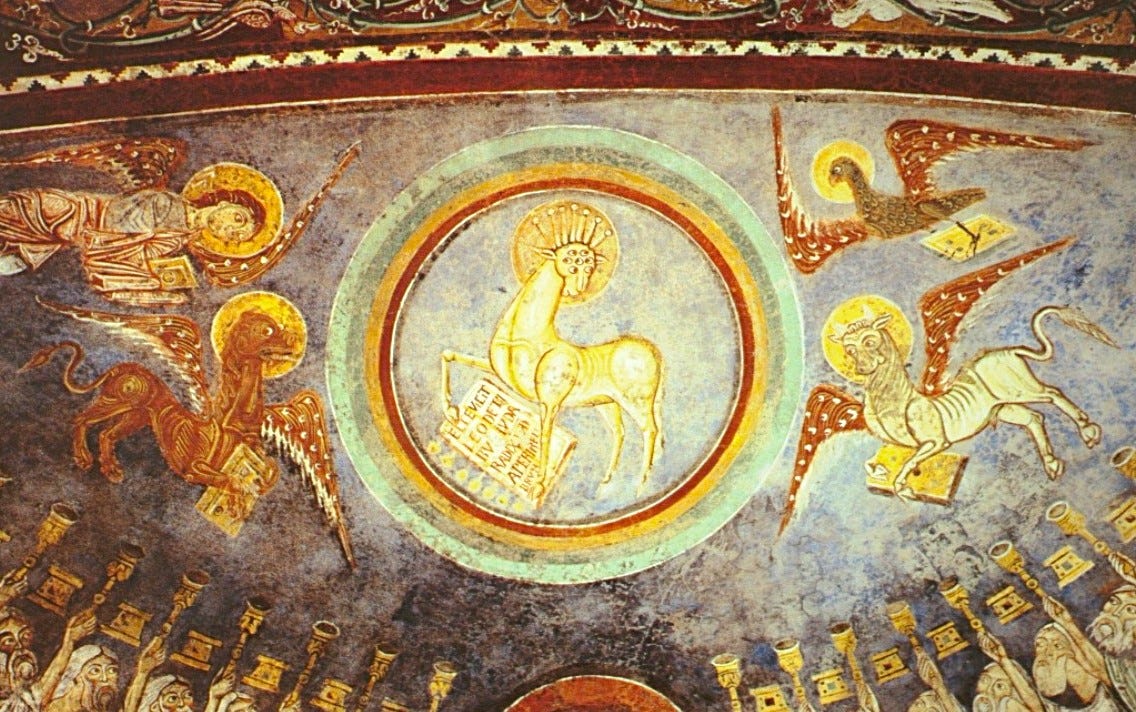
But I’ve actually had people asking why the face would be anthropomorphised. Really? You’re actually asking me? One in particular was difficult to believe, since he advertised himself on his profile as a “Jungian” psychotherapist. Aren’t those guys supposed to know about symbolism? Isn’t that what Jungianism is about? I thought he was joking.

This isn’t a modern misunderstanding. Sacred art has always been arresting, discomfiting, unsettling. If it isn’t those things, I have to wonder if it even qualifies. From the piercing gaze of the Pantokrator at Sinai to the hellmouths of the Winchester Psalter, these works were meant to confront, not coddle, their audience.
Christianity is for the salvation of souls from eternal damnation, and the restoration of humanity’s right relationship with God - your right relationship with God. It calls men to knowledge of sin and repentance, total transformation, and participation in the divine life through Christ, who conquered sin and death. It is a path to eternal communion with God, shaping both the individual and the world in the light of truth, love, and holiness.
Check out this collection of super-duper high res images by the restoration team of the Ghent Altarpiece.
In today’s Friday post, the paid section “below the fold” will examine why sacred art from the 6th to 14th centuries often portrays such solemn and intense figures. We’ll explore the theological and cultural reasons behind these expressions, from the commanding gaze of the Christ Pantokrator to the stark, eternal truths depicted in Giotto’s Last Judgment. Sacred art, in its authentic tradition, wasn’t meant to comfort or entertain but to confront and transform.
At the Sacred Images Project we talk about Christian life, thought, history and culture through the lens of the first 1200 years of sacred art. The publication is supported by subscriptions, so apart from plugging my shop, there is no advertising or pop-ups. It’s my full time job, but it’s still not bringing a full time income, so I can’t yet provide all the things I want to and am planning for.
You can subscribe for free to get one and a half posts a week.
For $9/month you also get the second half of the third post, plus a weekly paywalled in-depth article on our great sacred patrimony. There are also occasional extras like downloadable exclusive high resolution printable images, ebooks, mini-courses, videos and eventually podcasts.
Help for the sisters
Today instead of our usual plug for my online shop (which you can browse here) I’d like to help a friend. We’ve all enjoyed Mother Marie Billingsley’s reflections on the spiritual life from a Benedictine perspective; they’ve been among the most popular posts on the site.
The other day, she posted a request on her page for help to buy the first genuine set of monastic choir stalls for the growing community of sisters. This little community is trying to get started as a monastery that follows the full Rule of St. Benedict, with the traditional Mass and Monastic Divine Office.
At the moment, the five in residence have in their little chapel only these rather rickety kneelers, gleaned from friendly churches and neighbours.
It’s not ideal to be perched precariously on these, with all Office books stacked up. I know it would make a great deal of difference for them if they had real monastic choir stalls.
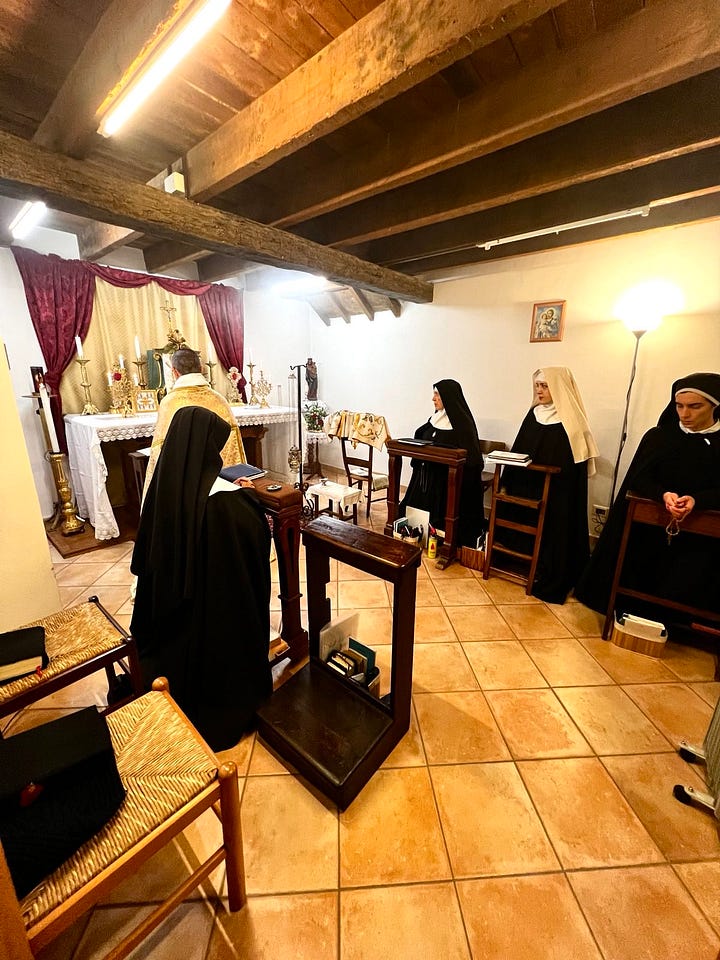
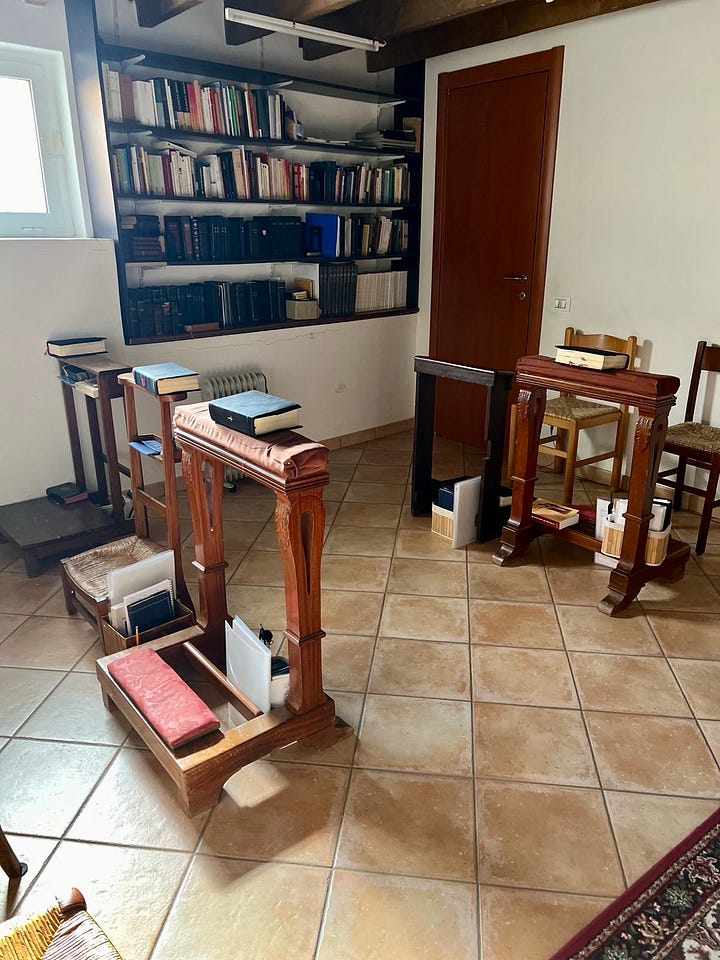
She writes: “We have been given the opportunity to acquire beautiful, antique monastic choir stalls, and we come to ask your help to realize this unique occasion to render our oratory more worthy of the “Prayer Par Excellence”. We thought of asking it as an early Lenten alms.”
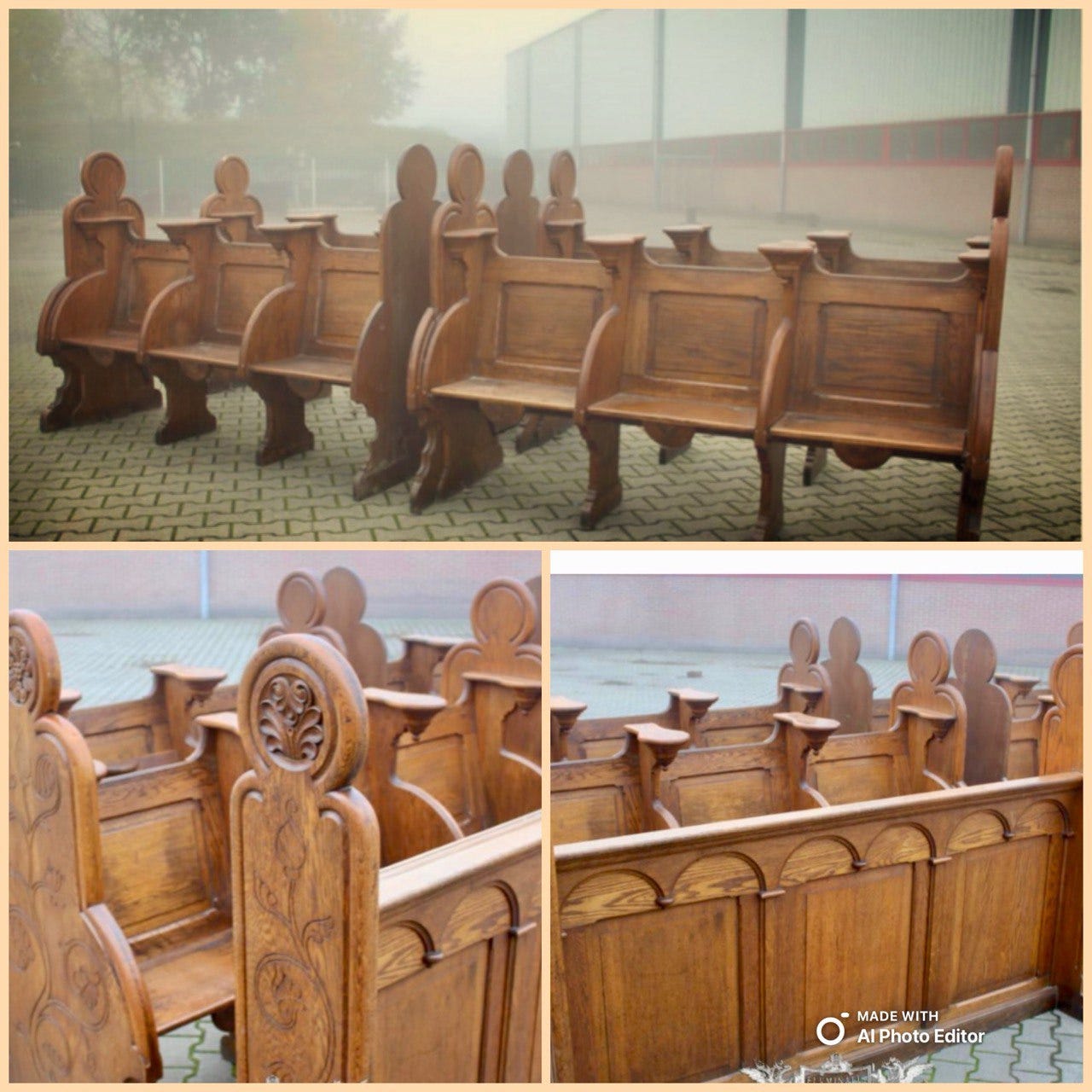
I know it is annoying to be constantly asked for donations for this and that, but I have made a case on this publication many times that the thing these sisters are doing, and trying to do, is the real solution to everything that’s been going so wrong in the last few hundred years.
So, I hope you’ll be able to help out.
Here’s the link for the online choir stall fundraiser.
Full instructions for US and European friends to donate to support the community generally are on their website, here. All donations from the US are tax-deductible.
Here’s the sisters’ January newsletter that includes photos from the 1st vows ceremony of our dear Sr. Scolastica.
Thank you for your help.
Subscribe to join us below the fold:

